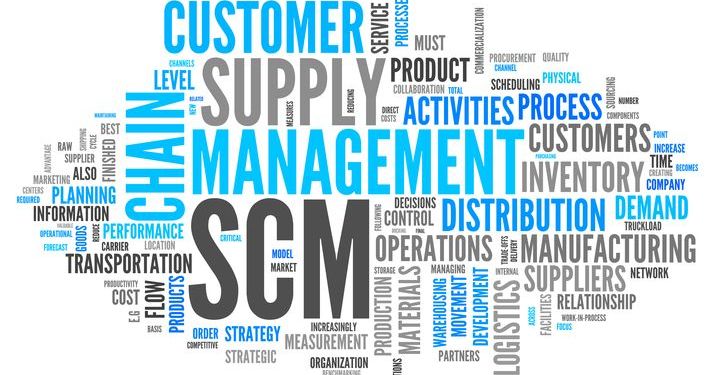
3 Technologies Fueling the Future of Supply Chain
Evolve, or fall behind? This is the main reality that all e-commerce businesses are finding themselves facing in this digital era – especially when it comes to their supply chains.
As technological advancements are changing business models, and encouraging new market opportunities, many businesses are finding that they must also evolve in order to expand their horizons, vision, and of course, revenue.
Personalization
It’s no secret that these days, it’s the customers that call all the shots. Not only are they extremely focused on receiving their goods – when they want them – but also, they are calling for a more personalized experience.
As we are in the era of ‘experience economies,’ the way businesses deliver value to their customers can make or break a transaction. These days, customers are searching for satisfying experiences, and businesses must orchestrate these experiences to ensure that the customer keeps coming back for more.
However, achieving – and maintaining – the customer experience is a difficult battle, as not only must businesses ensure that they are doing it better than their ever-changing and increasing competition but also, they must ensure that these experiences are highly differentiated from customer to customer.
For supply chains, this entails delivering a high-speed bespoke supply chain that keeps the customer in the loop at all times and enables a closer connection between buyer and seller. So, businesses must evolve their selection, personalization, prices, delivery methods, and much much more to differentiate themselves from the rest. With technology that allows for improved inventory control, ordering systems, real-time tracking, alternative delivery methods and so on, it seems that the supply chain will face a broad transformation that will open the doors to newer paths for engagement, experiences, sales, and of course customer control.
Mobile
Mobile, there’s no escaping it. From smartphones to tablets, to GPS, it’s hard to imagine a world without them. Mobile technology has rapidly taken over our personal lives, in fact, it’s estimated that by 2020 there will be 200 billion smart devices in use. Therefore, it only makes sense for mobile to make its way into the business world, and naturally the supply chain.
With its many moving parts, fast-changing conditions, and numerous stages, the supply chain proves to be a natural setting for mobile devices – as, in almost every area, mobility and mobile apps can add immense value to operations by:
-
Providing real-time visibility. As goods are always moving, workers must know where they are at all times. With mobile apps, this information becomes readily available to all who seek it.
-
Increasing collaboration. With mobile, geographic barriers are broken, thereby, enabling effective and rapid communication with suppliers, truckers, and even customers across the globe – and allowing for faster response times.
-
Improving flexibility. Whether you’re in the office, at a trade show, on the road, or elsewhere, with mobile, you can take work on-the-go and always ensure goods are where they need to be with minimal delays.
-
Faster tracking. When it comes down to it, there are many potential roadblocks that can arise and delay the supply chain. With mobile tracking, you can ensure you are ready for any setbacks and put your mitigation plan into place – while keeping customers updated.
Therefore, it’s clear that mobile is making a huge impact on the supply chain, and it’s rapidly becoming a competitive imperative.
Augmented Reality (AR)
We all know that the supply chain digests massive amounts of data, at any given moment – and for warehouse workers, truckers, management, and so on, keeping up with this data can be a hassle. However, with AR this hassle goes down the drain.
From pick-and-pack services to maintenance, to last-mile delivery, AR is making its way into all areas of the supply chain – and it’s very clear why. With its ability to digitally overlay information on physical objects in the real world, AR manages to locate products, fix issues, take over dangerous tasks, and cut time spent on delivery, in an efficient manner – all while the actual workers are sitting behind the comfort of their desks. It seems that AR is a very promising technology to bet on, especially due to its ability to make data more actionable. Even more, because it can run on Google or even AR-enabled smartphones – it is becoming extremely accessible, fast.
The digital revolution has brought about immense changes to the supply chain. With the capabilities of robotics and analytic technologies, the supply chain is being made faster and more efficient.
Since the supply chain needs to constantly digest data, anticipate customer needs, predict supplier issues, and dynamically make decisions, to keep up with the times, without technology e-commerce businesses would fall far behind the competition.
These are only but a few ways in which technology is fueling the future of the supply chain, and rest assured, as time goes on and more technology is introduced to the landscape – there will be an even bigger evolution of the supply chain.
My Bio:
Inbal Axelrod is the co-founder and CMO at MyRouteOnline, a multiple stop route planner that helps make businesses more efficient through route optimization. With the optimized route, individuals can arrive at all planned destinations at the expected time, avoid backtracking, and time-wasting. Meaning, customers will be able to please more customers, while saving time and money along the way. Inbal can be reached at inbal@myrouteonline.com


